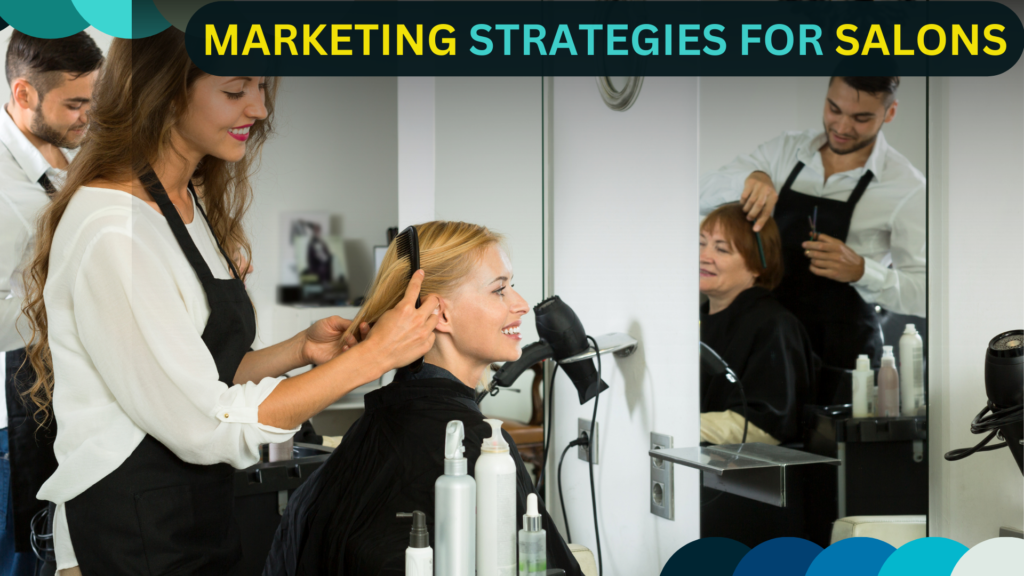Effective Marketing Strategies for Hair Salons
Effective Marketing Strategies for Hair Salons Explore effective marketing strategies for hair salons in this comprehensive guide. Learn about local SEO, upselling, website creation, social media ads, and more. Perfect for salon owners looking to attract new customers and grow their business Local SEO and Google My Business Most salon customers come from nearby locations. Therefore, the first step in marketing your hair salon is to list your business on Google My Business. This local listing ensures that when someone searches for “salon near me,” your salon appears in the search results. After listing, you need to optimize your listing to appear at the top of search results. This optimization is crucial as it directly impacts your business visibility. If your salon offers services at a lower price point, such as haircuts for 30-40 rupees, and you are unable to upsell the customer, running ads might not be beneficial. Upselling and Advertisements However, if you can upsell and your services are more expensive, for example, if you’re charging 200-250 rupees for a haircut and the average customer spends around 300-350 rupees, running ads on local SEO can be a viable option. Website and Booking System If your salon operates in this price segment, consider creating a website with a booking system. A well-designed website increases trust among potential customers and gives the impression of a well-established brand. Social Media Ads and Offers To attract customers, apart from local SEO, you can run social ads where you can showcase your offers. For instance, if you’re running an offer for hair smoothing at 2500 rupees and your target audience is within a 4-5 km radius of your salon, you can display ads on Facebook and Instagram. These ads can be in the form of video content, and potential customers can contact you directly through DMs. Implementing a chatbot on your social media platforms can facilitate bookings, and you can even accept payments through these platforms. How can I create a website for my salon? Sure, here’s the revised version of the guide without any links: Creating a website for your salon can be a great way to attract more customers and showcase your services. Here’s a step-by-step guide on how you can create a professional website for your salon: Research Website Design Trends: Look at other successful salon websites to get inspiration. Choose a Domain Name: Decide on a professional web address for your salon. Pick a Website Builder: Choose a website builder that fits your salon’s needs. There are many good website builders for salons available today that allow you to create a professional-looking website yourself without the need for any technical skills. Design Your Site: Design your new salon website. Make sure your website reflects the experience you want your salon to deliver. Accept Online Bookings and Payments: Implement a booking system on your website. This will increase trust among potential customers and give the impression of a well-established brand. Nail Your SEO: Optimize your website for search engines. This will help your website rank higher in search results, making it easier for potential customers to find your salon. Remember, creating your salon’s website yourself will for sure be the cheapest solution if you think about money investment alone. However, if you take into account the total cost of your time as well as how much sales the website will generate for you in the future if done by a pro, you may be better off giving it to a marketing agency for salons. What are some other ways to market my hair salon? Here are some additional marketing strategies for your hair salon with examples: Referral Programs: Encourage your existing customers to refer their friends and family to your salon. For example, you could offer a discount or a free service to the customer who brings in a referral. Loyalty Programs: Reward your regular customers with a loyalty program. For instance, after ten haircuts, the eleventh could be free. This not only encourages repeat business but also makes your customers feel valued. Partnerships with Local Businesses: Partner with other local businesses to cross-promote each other. For example, a local gym could distribute discount vouchers for your salon, and in return, you could offer a discount to gym members. Seasonal Promotions: Run promotions based on seasons or holidays. For instance, offer a discount on hair coloring services in the summer or a special package for bridal hair styling during the wedding season. Social Media Contests: Run contests on your social media platforms where customers can win free or discounted services. For example, a “best selfie” contest where customers post a selfie after getting their hair done at your salon and tag your salon’s social media account. Email Marketing: Collect email addresses from your customers and send them regular newsletters with special offers, new services, or salon news. For example, if you’re introducing a new hair treatment, let your customers know through an email blast. Community Involvement: Participate in community events or sponsor local sports teams. This not only gets your salon’s name out there but also shows that you’re invested in your local community. Remember, the key to successful marketing is to understand your customers’ needs and preferences. Test different strategies, see what works best for your salon, and don’t be afraid to get creative! How can I create a referral program for my salon? Choose Your Referral Rewards: Determine what a referral is worth to your business. For example, you might offer a free $10 gift card or a small service discount for every new referral. Iron Out the Details of Your Program: Decide who qualifies for the referral program, how long it will take to deliver rewards, whether there will be a limit on how much clients can earn through the program, and whether referred clients need to meet a minimum to qualify for rewards. Be clear in writing out the terms and conditions to protect your business. Add the Referral Field to Your Intake Form: This
Effective Marketing Strategies for Hair Salons Read More »


